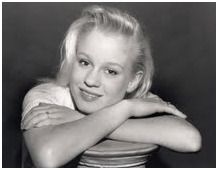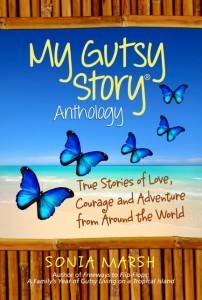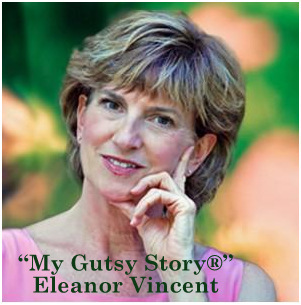Letting Go; Allowing My Daughter to Die
The Greatest Gift
“My Gutsy Story®” by Eleanor Vincent
I stared out the window in the Neuroscience ICU waiting room. Below me, stick figures moved across achingly green lawns. They looked like a cardboard tableau of normal life. Mt. Diablo’s saw tooth outline cut through a ribbon of clouds. A grandfather of a mountain, its hulking presence loomed above the rolling hills and valleys of Contra Costa County, a collection of suburban towns east of San Francisco. My older daughter Maya’s accident had happened three days earlier on a hot April afternoon in the foothills of Mt. Diablo.
She had hiked to a meadow laced with oat grass and wildflowers. A ravine full of scrub oak and laurel trees tumbled down to a dry creek bed. One of her friends dared her to ride bareback on a horse they found there unfenced and unsecured. The animal reared and threw Maya to the ground with such force that she never regained consciousness.
For the last 72 hours, we had endured the hell of waiting at Maya’s bedside.
Now, I looked at my watch, steeling myself to face the double doors that led into the Intensive Care Unit, and another ten minutes with my comatose child. I lifted the house phone.
“This is Maya’s mom. Can I see her now?”
“Yes,” a voice answered. “I’ll buzz you in.”
I walked toward my daughter’s bed, past the curtains surrounding families bent over other silent forms. After three days of willing my daughter to recover, an impossible thought dawned – Maya might not make it. When I reached her bedside, I took her hand in mine.
“Sweetheart, it’s Mom. I’ve been telling you that you will get well. But maybe what I want isn’t what matters.”
A roar filled my brain. I shook my head, trying to silence my own resistance. I spoke to my nineteen-year-old daughter, saying out loud what I would never accept in my heart. “You decide, honey. I won’t hold you back.”

Maya
I looked down at the beautiful young woman she had become. Maya’s face, inanimate as ice, was rosy-cheeked, bride-like against the stark white sheets.
I leaned into her and whispered the biggest lie of my life, never doubting she could hear me. “I’ll be all right, sweetheart, if you need to go.”
I wanted to throw myself across her chest and give in to hours of suppressed weeping. But then I had a new thought: If I break down, it will be too hard for her to die. My task now is to let her go.
Maya’s chest rose and fell. The ventilator hissed, the monitors beeped, a fiber optic cable snaked into her skull to measure the pressure inside her brain. Over the last three days I had become expert at reading the peaks and valleys on the monitors.
I whispered, “It’s between you and God, now, Maya.”
* * * * *
The next afternoon, Maya’s brain surgeon, Dr. Carr, asked to speak with us about the results of the cerebral blood flow study he had ordered. One of the nurses gathered us into a windowless conference room where a hospital social worker sat at the opposite end of the conference table, looking grave and sympathetic.
Dr. Carr came in, his white coat flapping, and sat down at the head of the table. I sat on his left side, staring at him.
“The test we did shows how much blood is flowing to the brain.” He spoke to the wall, not looking at us. “There is none, absolutely none, zero blood flow. I’ve declared her brain dead.”
I could not move, or even blink. A collective gasp filled the cramped room. Maya’s boyfriend, Dale, groaned. My ex-husband, Dan, put his head in his hands.
“I’ve called in a second surgeon to confirm the diagnosis of death by neurological criteria,” Dr. Carr said. He spoke with exaggerated calm, seemingly oblivious to the emotions swirling around him.
My eleven-year-old daughter Meghan leaned against her father and wept. Dale’s mother began screaming “NO!” over and over.
Hot tears of disbelief trickled down my cheeks. Of all the people in the room, I was the only one who did not move, or cry out. I felt granite-hard, yet sensitive as a tuning fork, paralyzed with grief.
For the first time since he had entered the room, Dr. Carr met my gaze. His eyes were like icy blue marbles. “Would you consider organ donation?”
The question hung in the air for a long moment. I pictured families in other hospital conference rooms waiting for bad news.
“Yes,” I heard myself say.
Dr. Carr nodded. “At least it won’t be a total waste,” he said. I recoiled.
He waved his hand in the direction of the ICU and all the high-tech gadgetry keeping Maya’s heart beating, her lungs pumping, her blood circulating. I could see he meant that all the effort and resources spent on a hopeless case would not be in vain. But my “yes” meant that the love and energy I had poured into my daughter, her very life, must continue. I could no more accept that Maya was truly dead than I could fly to the moon or allow any vital part of her that could save another human being to go to her grave.
I trembled uncontrollably. I was about to give my daughter away in pieces. If I had fought harder, could I have held her here? I gave Maya ultimate freedom and she took it.
* * * * *
Maya’s organs were donated to critically ill patients. My decision saved four lives. Her bone and tissue helped restore sight and mobility to dozens more. In the 21 years since that April day when I made the most difficult decision of my life, I have often wondered what gave me the strength to say yes. From someplace deep within came a sure knowing that donation was the right thing to do. It was the gutsiest moment of my life.
ELEANOR VINCENT is an award-winning writer whose memoir, Swimming with Maya: A Mother’s Story, was nominated for the Independent Publisher Book Award and was reissued by Dream of Things press early in 2013. She writes about love, loss, and grief recovery with a special focus on the challenges and joys of raising children and letting them go. She is a national spokesperson on grief recovery and organ donation, appearing on radio and television programs around the country.

Click on cover to go straight to Amazon
To connect with Eleanor please click on her sites:
Website
Twitter @Eleanor_vincent
***
Do you have a “My Gutsy Story®” you’d like to share?

Click on cover to go to Amazon
Would you like to submit your “My Gutsy Story®” and get published in our 2nd anthology?
Please see guidelines below and contact Sonia Marsh at: sonia@soniamarsh.com for details.
You can find all the information, and our new sponsors on the “My Gutsy Story®” contest page. (VIDEO) Submission guidelines here
Our January 2014 “My Gutsy Story®” series started with:
Jon Magidsohn
Gillian Jackson
Monday, January 27th, Shirley Showalter will share his “My Gutsy Story®.”
VOTING for your favorite January 2014 “My Gutsy Story®” starts on January 30th and ends on February 12th. Winner will be announced on February 13th.





